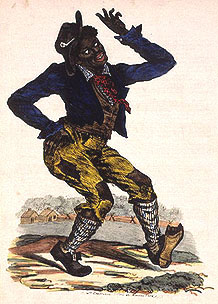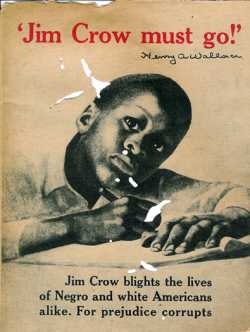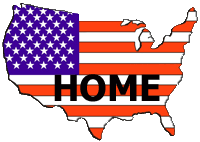Lesson Four: Are Laws Always Fair?


Broad Goals:
Cognitive: The students will define prejudice and how the term prejudice makes them feel. The students will learn about the 13 th amendment (the one that abolished slavery) and how Abraham Lincoln worked to make this possible for African-Americans. They will understand that while the 13 th amendment abolished slavery, African-Americans still had to work extremely hard to gain freedom in the United States . We will briefly discuss the 15 th amendment (that gave African-Americans the right to vote) and how this made people upset so they searched for more ways to hinder African-Americans from gaining too much freedom (ie. Jim Crow laws).
Affective: Students will explore how the term prejudice makes them feel, by facing their own prejudice through out the lesson. There will be signs designated in areas that say, “Blonde Hair Only” and “Brown Hair Only.” The teacher will have a prejudice against children with brown hair. Once the students understand why the teacher is doing this (examples of the Jim Crow laws) the students should gain an understanding of what it is like to have someone dislike you for no reason other than the way you look. They will discuss how this makes them feel and role play various Jim Crow laws that they will understand. Students will also conduct an activity in which they find things that would be considered a prejudice and not considered a prejudice.
National Social Studies Standards:
• IV.h . Work independently and cooperatively to accomplish goals
• V.g. Show how groups and institutions work to meet individual needs and promote the common good, and identify examples of where they fail to do so
• VI.d. Recognize how groups and organizations encourage unity and deal with diversity to maintain order and security
Illinois State Standards:
• 4.A.1a. Listen attentively by facing the speaker, making eye contact, and paraphrasing what is said
• 4.A.1b Ask questions and respond to questions from the teacher and from group members to improve comprehension
• 4.B.1a Participate in discussions around a common topic
• 16.D.1 Describe key figures and organizations
• 18.B.1a Compare the roles of individuals in group situations
In this lesson students:
Students were divided into two groups (blonde haired children and brown haired children). They were asked to work separately through out the lesson. We talked about what it means to be prejudiced, what causes prejudices, and how prejudices led to slavery and the Jim Crow laws. Students discussed their feelings about these laws, acted out role plays of different Jim Crow laws, and wrote a story about their feelings.
Information discussed:
Abraham Lincoln did not think this was fair either. When America became a free country we decided that “all men are created equal” yet were the slaves being treated as equals? Abraham Lincoln did not think so. He thought that slavery was an injustice that not only was it wrong, but it took away from the idea of democracy. But Abraham Lincoln felt so strongly about this topic that he would not let the idea go. This angered states in the south and they decided they no longer wanted to be part of the United States (this began a war… The Civil War
Why did slavery begin? People were prejudiced. They thought white people were superior and black people were inferior.
The Emancipation Proclamation and the 13th amendment ended slavery. Afetr the 13th amendment was writte, so was the 14th (which protected civil rights) and the 15th (which gave black people the right to vote).
What are civil rights? Protection or rights given to citizens by law. Aka “human rights”, “natural rights” “God-given rights”
This made white people very upset!! They felt like African-Americans were gaining too much power so they thought of ways to restrict this power. That is how we got the Jim Crow laws.
Who is Jim Crow? He was a man from a song that said was hurtful and discriminated against blacks.
These laws were used to make sure that White people stayed the superior people. These laws were only made in some states (particularly the south). Back and white people could not shake hands, they could not eat together (and if close by there needed to be something to separate the whites from the blacks), white people got served first at restaurants (even if they were not there first!) Black people could not hug their mom or dad in front of anyone. How many of you hug your mom or dad when they drop you off at school? Imagine not being able to do that in front of anyone!!
Why were white people allowed to do this even though we are supposedly created equal? Well they said that black people were being treated equal (being allowed to eat dinner at restaurants, attend movies, go to school, etc) but they would be separated. For example, blacks and whites did not attend school together. There were two schools, one for white children and one for black children. Both groups of children were allowed to get an education but in separate places.


